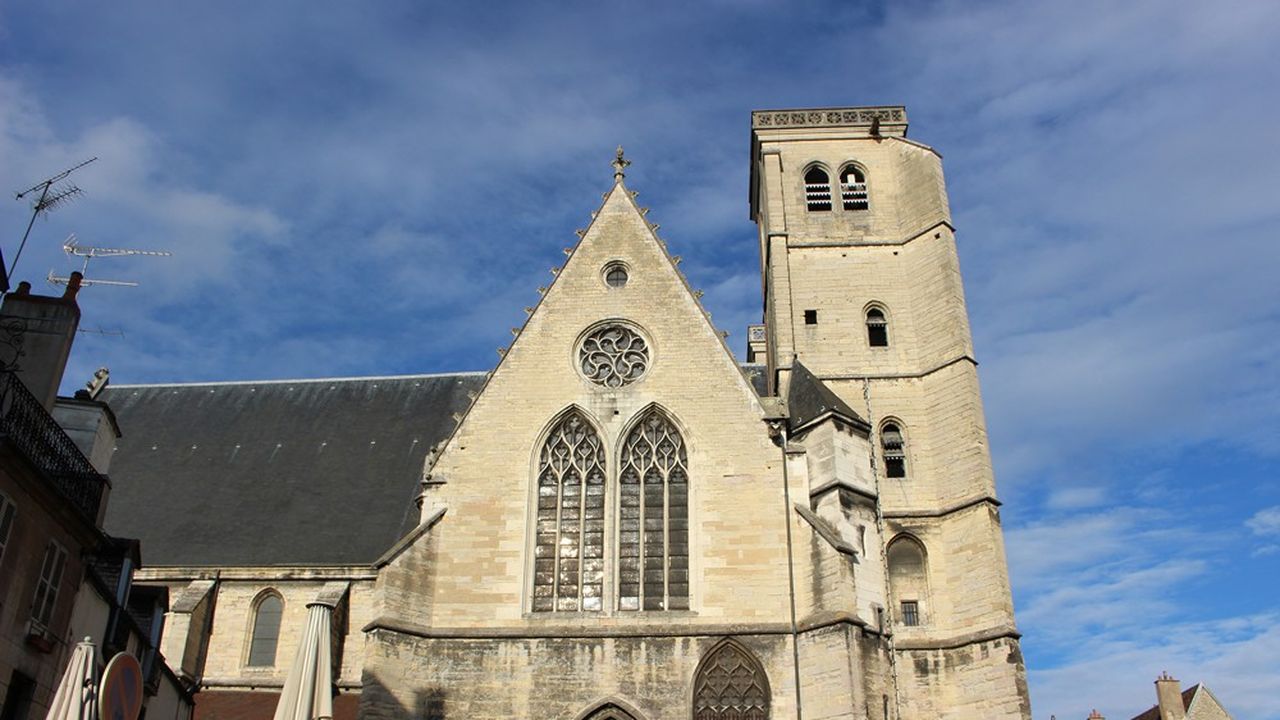Stained glass windows, turrets, sculpted porch… From the outside, this 15th century Dijon church seems to have survived the years and renovations intact. Inside, however, priest and faithful have been replaced by actors and spectators. In 1974, the Saint-Jean Church was indeed transformed into a theater and became the Parvis Saint-Jean. Although this reconversion is almost unsuspected during a naive stroll in the city of 100 steeples, it is unmistakable from the first steps taken in the vestibule.
There is a mirror ball that seems to fall from the ceiling, surrounded by paintings by Benedict Masson from the 19th century. A clever combination that can be found in each of the key rooms of the theatre: the chapel has been elegantly transformed into a bar and the turrets into dressing rooms. But it is finally at the level of the transept and the choir that everything is decided. Beneath the ribbed vaults characteristic of the flamboyant Gothic style stands a huge black cube. Inside, a 12-metre stage and a platform with 270 seats.
As soon as you enter the theatre, the old is adorned with modernity.DR
Combining heritage and the stage
“The building has been listed as a historical monument since 1862,” says Elise Oudot, public relations officer for the theatre. “We can occupy the place, but without damaging its identity.” It is therefore impossible to obstruct the stained glass windows to make it dark or to review the architecture of the Church to avoid its echo. “So we placed the stage in this black box which isolates the performance hall from the constraints of the place. It is a self-supporting structure: if tomorrow, we no longer have the right to be here, we will leave without leaving a trace, ”assures Elise Oudot.
The thirty employees of the Parvis Saint-Jean, just like the directors and the actors, have to deal with this unprecedented scene. For example, there are no corridors at the back of the stage. Actors wishing to leave on the courtyard side and enter on the garden side are obliged to go through the exterior of the Church, creating a surprise for the spectator, but also for passers-by. In addition, three bishops are buried a few meters under the boards, limiting the ambition to dig under the stage to pass elements of scenery or machinery. Long poles have therefore been installed on the ceiling of the “black box”, to which curtains, spotlights and halyards are hung.
 –
–The room can accommodate 270 seats, cut off from the echo and the light of the Church thanks to the construction of a “black box”.Micor
Rocky beginnings
However, the first performances did not benefit from these technical arrangements. During the inauguration of the Parvis Saint-Jean in 1974, with the play King Lear by Shakespeare, the lack of visibility was mixed with the poor acoustic performance, the cold but also and above all with the protests. In front of the porch, 80 monks from the Abbey of Cîteaux would have come to express their disagreement with the conversion of the building, says Elise Oudot. “On the one hand, Shakespeare is known for making fun of religion, and on the other, comedy is suspected of distorting the soul”. For the protesters, “playing in an old church is therefore not acceptable,” she explains.
Times have changed a lot, however: today, the parvis Saint-Jean hosts 15 to 20 shows a year, a festival in May and acts as a place of residence for companies ahead of their performances.
–


/cloudfront-eu-central-1.images.arcpublishing.com/ipmgroup/WH46LZOL7RBRFJFSZQGCAGOSTE.jpg)